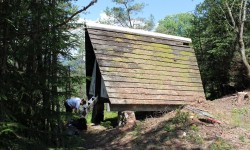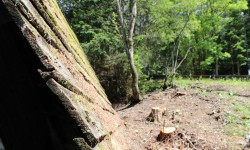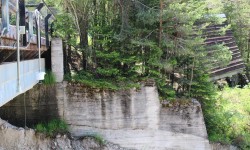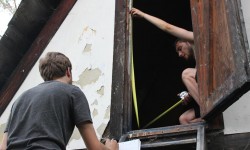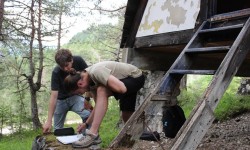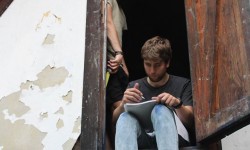The Permanent Tents Camping (which are kind of huts: capanne in Italian) is one of the various extraordinary structures realized by Edoardo Gellner in the Corte di Cadore Village.
The Capanna 0, the prototype, can now be found at the Sales Office.
The Authority for the Fine Arts and Landscape has tasked the Belluno Province with the realization of an accurate survey of the Hut, considering its historical value and the importance of the site itself in relation to the surrounding landscape.
Following the survey, the Hut will be demolished and re-built in another part of the Village.
The Hut must also be moved for reasons concerning its proximity to the Cancia landslide, and with protection and hydrogeological stabilization works currently involving the affected area.
Dolomiti Contemporanee, in accordance with Minoter, has gladly accepted the proposal of the Belluno Province to take care of the survey, employing active Progettoborca resources on it.
In particular, we’re interested in transforming the prototype Hut into a display, through which to tell the story of the site and its current regenerative phase.
We’ll then reflect on the design of a second Hut-module, realized with light materials, easily disassemblable and transferable: a mobile display, equipped with network and media technologies, which may be installed in different places as time goes on.
The survey, and the first musings on the display project are carried out thanks to the collaboration with Nicola Noro and Luca Desolei, two architecture students about to graduate from the IUAV University of Venice.
Nicola and Luca are now taking part in the Residency program in Borca (a special thanks must be given to the Doriguzzi family for their hospitality), where they’re also taking care of a photographic work on the site (Church, Cottages, Boite Hotel, Camping: in the woods and in the landscape, physical and cultural).
This important photographic work will be posted in the Architecture section of this website, in which archival materials of various kinds (photographs, documentaries, historical and bibliographic pieces) are stored.
Foto: Elsa Calligaro

